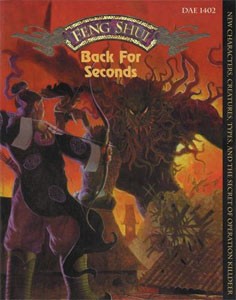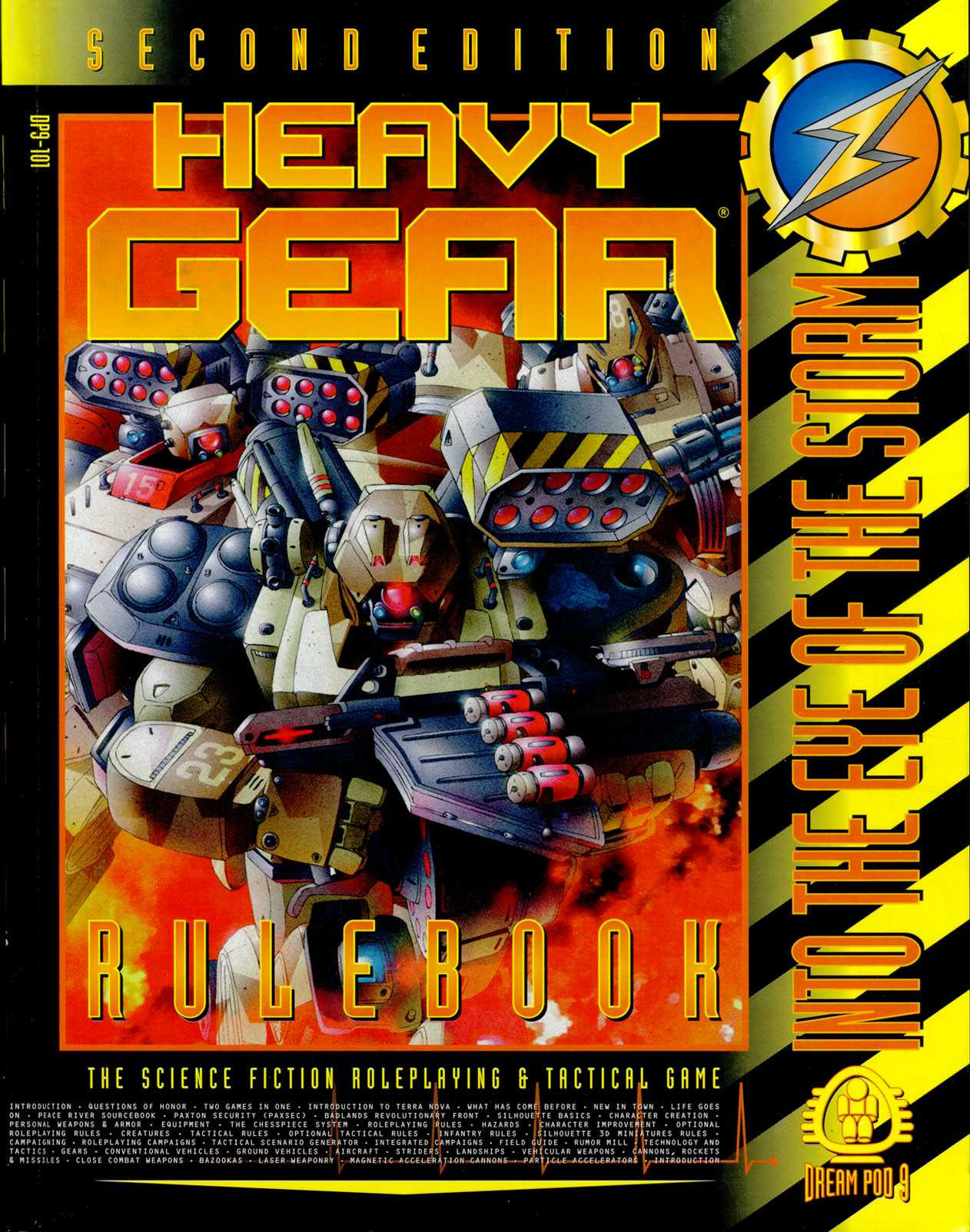Tagline: This is the book which accompanies quite a few games – the odds and ends which got excised from the primary rulebook, padded out with a handful of NPCs.
 In the few short years since its creation and demise at the hands of poor business acumen Feng Shui has established itself as one of the classics of the industry. Unfortunately it was marred by a mixed bag of supplements – some were very good, but others were drawn from the bottom of barrel. Back for Seconds is, in my opinion, the worst of the lot.
In the few short years since its creation and demise at the hands of poor business acumen Feng Shui has established itself as one of the classics of the industry. Unfortunately it was marred by a mixed bag of supplements – some were very good, but others were drawn from the bottom of barrel. Back for Seconds is, in my opinion, the worst of the lot.
To understand the atrocity which this product is you have to understand from whence it was conceived: First, when Robin D. Laws finished the core rulebook some of the material he produced had to be excised due to space considerations – the in-depth description of Operation Killdeer and also several of the character creation Types. Second, the setting for Feng Shui was loosely based on the elements found in the collectible card game Shadowfist — included in the Shadowfist game were several cards detailing specific characters and some cards detailing feng shui sites.
Welcome to Back for Seconds, a bastard child of supplement creation. With a foundational structure of the dozen pages or so of Laws material which didn’t make the final cut of the rulebook, Jose Garcia (the “executive producer” of the Feng Shui line of products) hired a hodgepodge of creators to write out the characters and locations from the Shadowfist cardgame. John Tynes (the product’s “developer”) describes the result best in his introduction as “Central Casting” – but I can’t say I’m impressed with the results.
(None of this, by the way, should be taken as a condemnation of the creative personnel involved in this project.—with names like Bruce Baugh, Greg Stolze, and John Tynes working on it there’s no way you could sanely say this was true. But the product was conceived as a hodgepodge and the result is precisely that: A hodgepodge of questionable usefulness.)
Insofar as it is a hodgepodge, Back for the Seconds is probably the best product of this variety I have yet encountered. The NPCs are generally engaging and interesting (even if they are largely based on one sentence “catch-phrases” from the Shadowfist cards). The types which were cut from the main rulebook provide valuable options to the character creation system. The locations are interesting, if of limited versatility. But the overall product can’t overcome the basic flaw of its conceptual base. It simply fails, in my opinion, to be a valuable sourcebook. About the only thing which would make this worth your money would be the Robin D. Laws material (which is why this receives a 3 and not a 2 rating in substance), otherwise you’d be just as well off spending your money on renting a few Hong Kong action flicks and ripping them off. You’d have more fun.
Style: 3
Substance: 3
Writers: Bruce Baugh, Dave van Domelen, David Eber, Jose Garcia, Steven Kenson, Bob Kruger, Robin D. Laws, Andy Lucas, John Tynes, Greg Stolze
Publisher: Daedalus Entertainment, Inc.
Price: $14.00
Page Count: 78
ISBN: 1-888335-02-5
Originally Posted: 1999/04/13
Feng Shui was one of two games that got me back into roleplaying games. In the mid-’90s I had drifted away from roleplaying games: I had lost my regular groups, other interests were beginning to consume my time, and I had also lost easy access to the online communities that had seen me through previous dry spells. But in the summer of ’97, I was living in Mankato, MN with my dad.
About midway through the summer, I read a blurb in the Comic Buyer’s Guide talking about TSR, Inc. being essentially bankrupt… Wait. What?! (I guess that explains why I haven’t seen an issue of Dragon Magazine in months.) In an effort to figure out what was going on, I ended up figuring out how I could access some of my old haunts on Usenet and Fidonet. The result was that I got plugged back into gaming news.
I don’t remember now whether it was Feng Shui or Heavy Gear that intrigued me enough that I looked up a local hobby store and biked across town to check it out. This little hobby store only had 3 shelves of incredibly unorganized RPG material, but by some miracle they had these games: One I had come looking for; the other captivated me. I ended up buying both and spent most of the rest of the summer biking back for more.
(And it was an incredibly exhausting bike trip: Mankato is built around and over a cliff facing a river. My dad’s apartment building was located, almost improbably, halfway up this cliff: So no matter where I went, I was either biking up the cliff to get there or up the cliff to get home.)
For an explanation of where these reviews came from and why you can no longer find them at RPGNet, click here.













